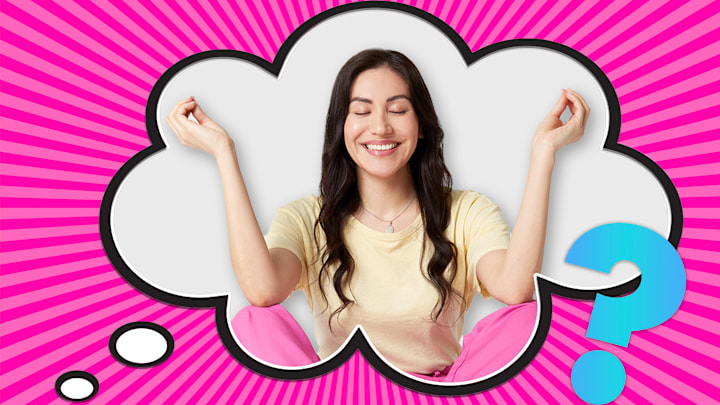If you’re in the pink, then you’re feeling well, or in excellent health. With that in mind, it might be tempting to presume this expression alludes to the flushed, pinkish complexion of someone in equally good physical condition. But digging a little deeper shows that how we use this phrase today is not actually its original meaning—and in fact, the origins of this phrase may well lie in a completely different (and somewhat unexpected) direction.
The Best of the Best
In Act 2, Scene 4 of Romeo and Juliet, Mercutio exclaims that he is “the very pink of courtesy.” Shakespeare is clearly not using pink to mean “in the best health” here, but rather more generally to mean the absolute pinnacle or epitome of something. This looser interpretation of pink to mean simply “the best” was for a long time the norm in English—and not always in a positive context, either. In a letter to his friend Alfred d’Orsay in 1845, for instance, Charles Dickens described the Italian city of Fondi, near Naples, as “the very pink of hideousness and squalid misery.”

Various expressions along these lines have been in use in English over the centuries; in the 1700s and 1800s, for instance, “in the pink of the mode” was used to refer to something at the very height of fashion. But it wasn’t until the early 1900s that the specific use of pink, or rather in the pink, in relation to good health first began to emerge, and in doing so effectively consign all these other versions and implications of pinkness to the historical footnotes.
Long story short, then, the connection between pinkness and healthiness in in the pink isn’t some kind of reference to flushed complexions, but an extension of an older and more general phrase in use since Elizabethan times to describe anything at all considered the very best of its kind. That, however, leads to another question: how did pink come to mean “the best” in the first place?
You May Also Like ...
- Why Do We Say “Right as Rain”?
- Why Do We Say “Up the Wazoo”?
- Where Did the Phrase ‘Waiting for the Other Shoe to Drop’ Come From?
Add Mental Floss as a preferred news source!
The Pink Pony Club
There’s an old etymological wives’ tale that would have you believe all of this can be traced back to the traditional scarlet-colored hunting jackets, or “pinks”, that have long been worn by the equestrian participants of fox hunts in rural England. Legend would also have you believe that many of these jackets were once tailored by a renowned 18th-century gentlemen’s outfitter based in the high-class Mayfair district of London named Thomas Pink, hence their name (despite their obviously blood-red color). The story goes that either the especially fine quality of Mr. Pink’s jackets or else his routinely upper-class customers (or their especially healthy bank balances) led to pink coming to mean the very best of the best.

As neat as this story would be, however, unfortunately it appears to be little more than London folklore. No reliable contemporary reference to a London maker of riding jackets named Pink has ever been uncovered—and what’s more, even if he were real, the fact that he was supposedly operating in the 18th century would still put him around 200 years after Romeo and Juliet. Ultimately, if we’re going to get to the bottom of all this, we’re going to have to go all the way back to Shakespeare’s day.
Flower Power
As any good gardener will tell you, as well as being a color, and another word for the very best of something, the word pink is also the common name for flowers in the Dianthus genus. (In fact, thanks to their often pale-red petals, these flowers are apparently the reason why the color pink has its name at all.) As well-liked as these hardy perennials are among gardeners today, though, pinks were especially popular in the Elizabethan era; in the famous Hampden Portrait of Queen Elizabeth I herself, in fact, the monarch is shown holding a pink in her right hand.

Ultimately, the queen’s fondness for the flowers—and their more widespread popularity in Shakespeare’s day as a result—may well be the reason why pink in turn came to be associated with excellence. That would explain why the word was once used far more generally in this context than it is today—and, unlike the Thomas Pink theory, would also account for this connection appearing to emerge around the time of Romeo and Juliet. But that still leaves one last question: why are Dianthus flowers called “pinks” at all?
Sadly there isn’t sufficient to say for sure where this name comes from, but one of the most likely theories is that it is the slightly notched or perforated edges of the flowers’ petals that lie at the bottom of all of this. Just as a sewer’s pinking shears are used to produce a zigzagging cut in a piece of fabric, pink has been used since medieval times to mean to perforate or to pierce through with something (the word likely being adopted into English from an earlier French or Dutch term, with either Latin or Germanic roots). The “pinked” appearance of the flowers, ultimately, earned them their name in English, before all the other associations we’ve looked at here—as well as the color pink itself—fell into place from there.
